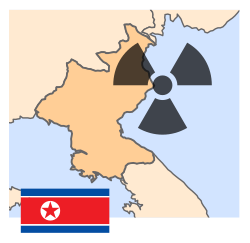Events
Missiles have been fired from the launch site at the port of Wonsan on the east coast of the country. Based on information from an anonymous government representative in Seoul, Korean agency Yonhap reported that the missiles are of the Scud type with a range of around 400 kilometers. [3]
During the week North Korea announced upcoming military exercises in the Sea of Japan, and with it declared an area closed to navigation around the port of Vonsan and into the Sea of Japan and covering an area of 450 by 110 kilometers. The planned military exercises were announced to cover the period from June 25 to July 10.
The latest round of missile launches were timed for the United States' Independence Day as a show of military might and came on the heels of UNSC Resolution 1874. [2] Sanctions and penalties were declared in the wake of the May 25 underground test of a nuclear explosive device by Pyongyang, and what the DPRK insist was an attempt to peacefully place a satellite in orbit but what the United States, Japan and South Korea see as cover for the development of a long-range ballistic missile.
The North Koreans have previously warned that any attempt to enact sanctions will be seen as an act of war.
The United Nations Security Council condemned the launches expressing "grave concern" and urged all countries in the region to refrain from any action that could escalate tensions. [4]
This page is based on this
Wikipedia article Text is available under the
CC BY-SA 4.0 license; additional terms may apply.
Images, videos and audio are available under their respective licenses.
